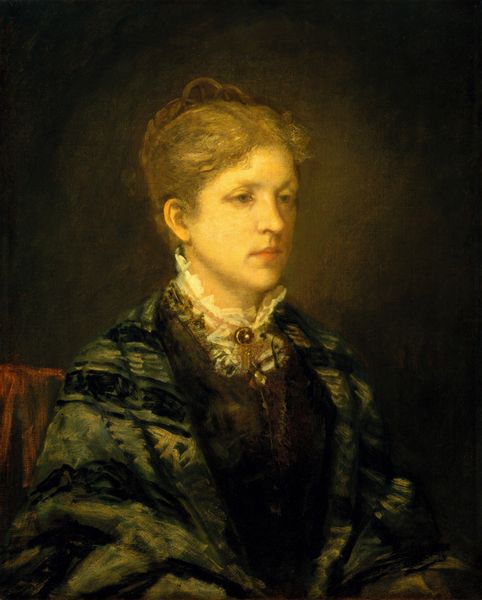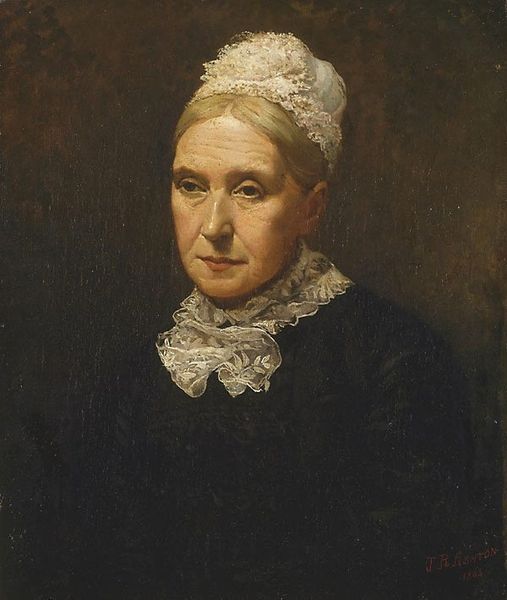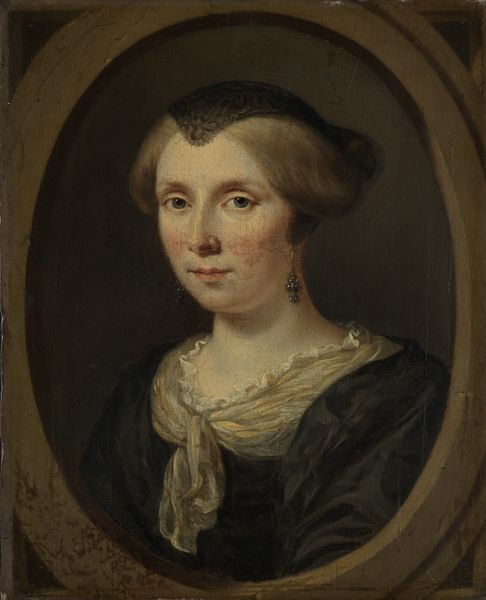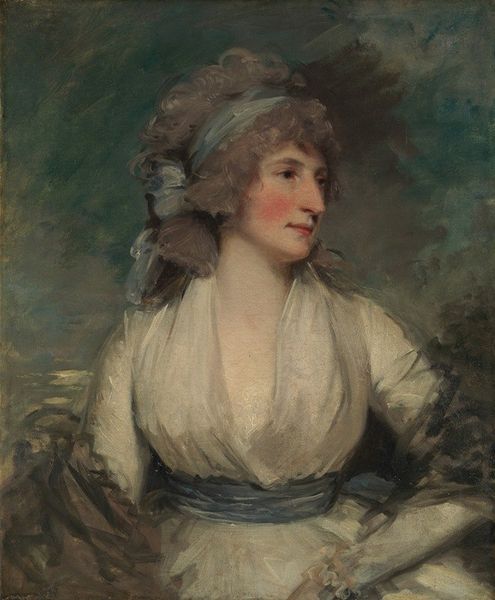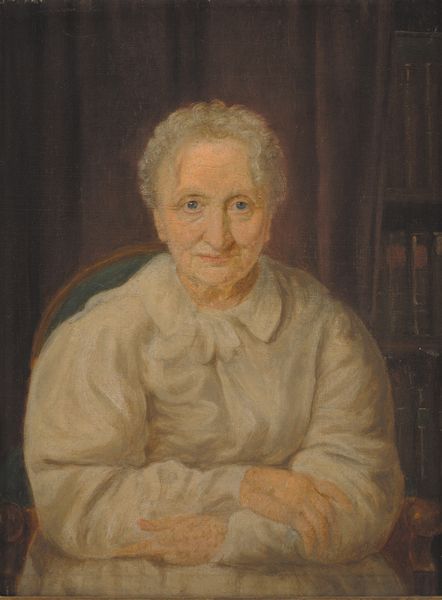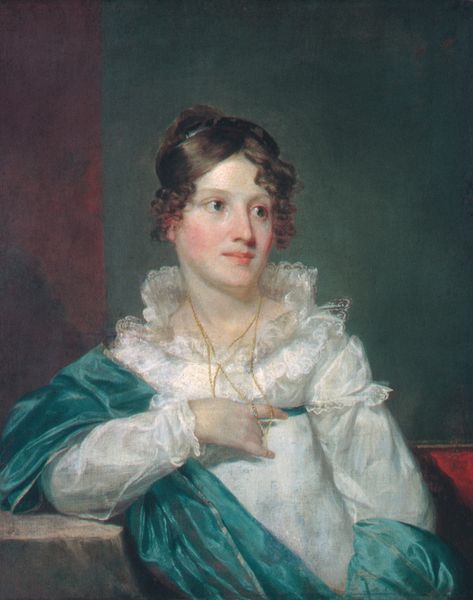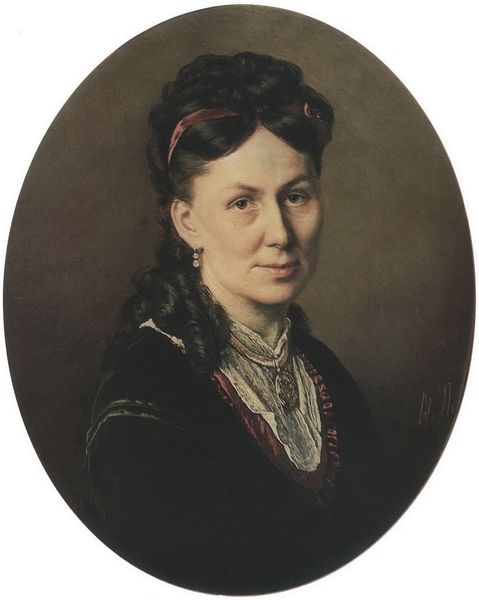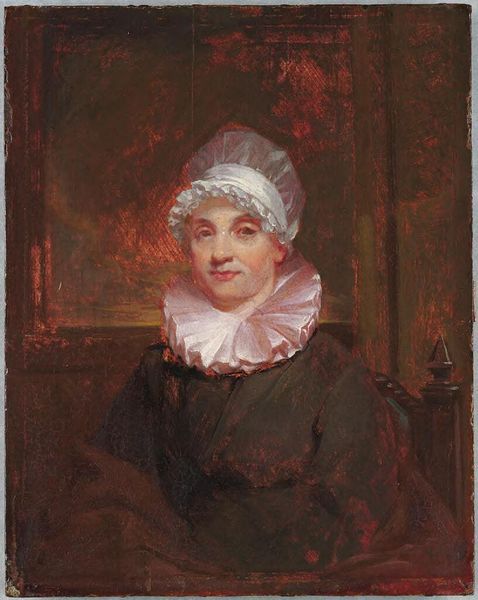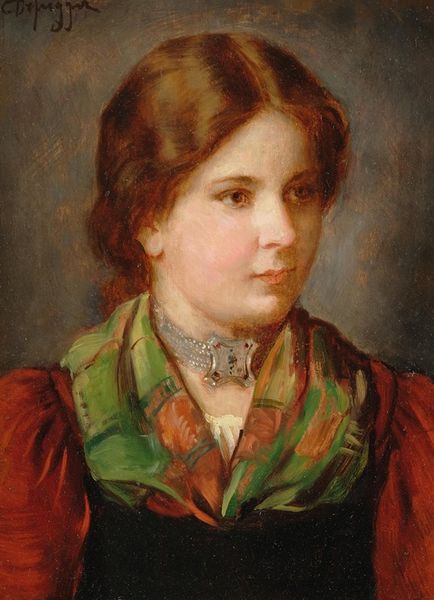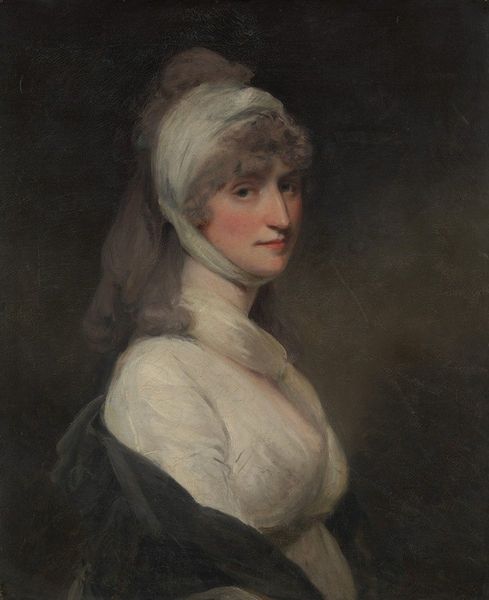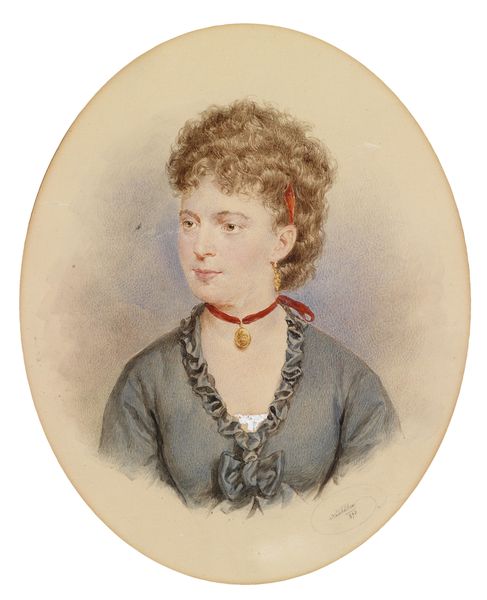
painting, oil-paint
#
portrait
#
painting
#
oil-paint
#
portrait reference
#
portrait head and shoulder
#
genre-painting
#
academic-art
#
realism
Dimensions: overall: 68.3 x 56 cm (26 7/8 x 22 1/16 in.) framed: 81.3 x 71.1 x 6.7 cm (32 x 28 x 2 5/8 in.)
Copyright: National Gallery of Art: CC0 1.0
Curator: I’m immediately struck by the muted palette, the dark background contrasting with the pale face—it has a very somber feel. Editor: Indeed. Here we have George Fuller’s oil painting, "Agnes Gordon Cochran Higginson (Mrs. Stephen Higginson)," dating back to 1876. A compelling example of portraiture from that era. Curator: Her expression is so guarded, almost melancholic. Is that a product of the time, or perhaps indicative of her station in life? There's a definite sense of quietude in the way he's captured her. Editor: The late 19th century certainly saw a trend in representing women with a certain degree of restraint, reflective of social expectations. Fuller, though, often portrayed his subjects with an intimate lens. This was a period where the burgeoning middle class were shaping cultural values and, of course, also demanding to be seen in public life, or, in this case, artistic representation. Curator: The softness of the light feels significant, though. It almost creates a halo effect around her head, softened even more by her bonnet, hinting perhaps at domesticity or piety? And her brooch appears like a dark eye, gazing from the throat. What can it reveal about social stature, if anything? Editor: Those soft highlights definitely invite closer examination. Her attire and bonnet may signal adherence to social conventions. The brooch acts like a signifier, but whether it explicitly conveys wealth, we’d need deeper socio-historical study and material records to say. Likeness was about self-presentation for his clients as much as an artistic reflection. Curator: It’s fascinating how Fuller captures the nuance of human presence. Despite its apparent simplicity, the work evokes a complexity of character that transcends the conventions of typical portraiture. The muted palette, along with its focus on a matriarch’s character, offers layers of subtle messages from a seemingly ordinary object. Editor: And by re-examining the portrait, and the period in which it was created, it becomes evident that the image is an artifact documenting how personal identity and the cultural identity mix and reflect social shifts and personal choices, both through her self presentation as well as her likeness by Fuller’s rendering. It is in the detail of social portraiture, perhaps, where history is really recorded and understood.
Comments
No comments
Be the first to comment and join the conversation on the ultimate creative platform.

